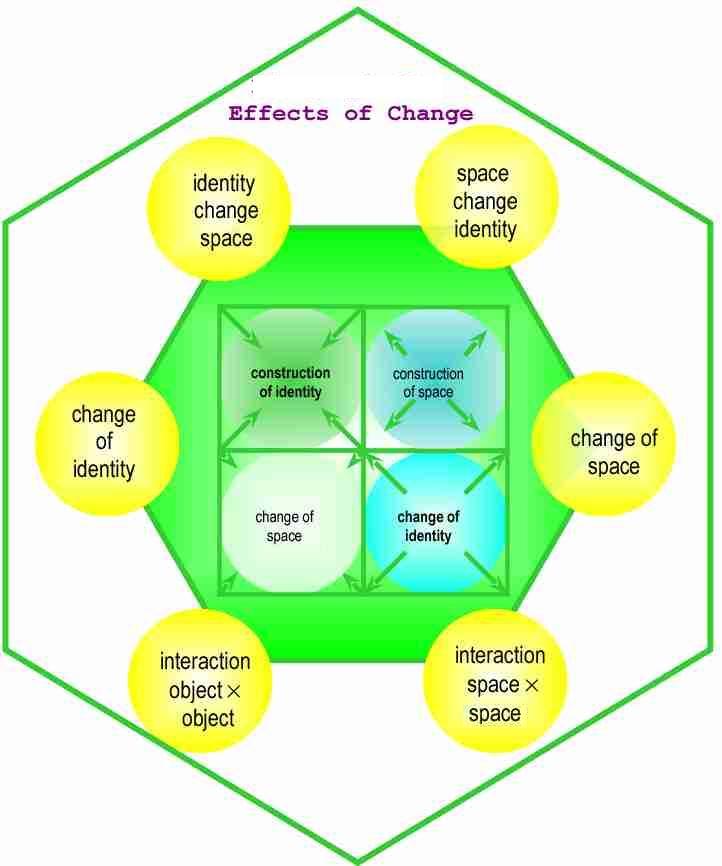Effects of Changes
Considering unit, environment(s) and conditions, since reductionism has tended to overproduce definitions, to pretend to disguard any kind of uncertainty; rather than recognizing them so as probability, chaotic changes and so on. A better approach has to balance what stay, change and transform. Considering that first in reality is not static but dynamics. So better attention much be given to interactions, transformations and changes of definitions and 'transported ones'. This is the suggestion of olicognograph below.

Physical sciences display many ressources and procedures or processes to ensure the stability and consistency of their working concepts. Well consciouss of that, experiments, reproducibility, controls of conditions, results of experiments, simulations of models and formal inference make the core of exact sciences engineering. Byside of exact sciences many difficulties stay and are well taken into account making so scientific research. Mixture of these difficulties are with making a difference between labels and true phenomena. Also if coherence is pushed ahead with axiomatic mathematical induction which apply somehow well with 'naked fundamental physics' (at the almost elementary basic level of particles). But we still have plenty of empirical practices, especially those hard ones excluding humans' whimsiness, and nevertheless under the proper cover of thermodynamics balances (also called statisticalphysics), giving the vanity to some experts living on, that they are scientists.
Other harder problem of formalism are with the sort of difficulties as problems demonstrated undecidable, non complete, non mathematizable and so on. We have also there some subterfuges. Finally more subtle difficulties are on one side with the sort of patterned complex operations. Most fundamental physical ones are taken into account with what are called operators. Further up in complex physics it is still difficult sometime to make a difference between iterative procedures, asymptotic ones or more local aleatory ones (say like cellular automata; that is to say know if they are consubstantial to the method or to the real subjects). On the other side of subtle difficulties there are transformations induced to real amounts and the very simple expression of basic operations. Even with good existing formalism there are plenty of correct ways quite poorly observed in many practices of experts.
Simple operations do not follow well transformations or different levels of scales. When there is large steps of scales and with fundamental phenomena methods exist to provide closer estimations of fundamental values (renormalization, transformations methods etc.). Empirically also simple operations are more easy to calibrate at the homogeneous middle of the window of phenomena. At the margins it is more difficult.